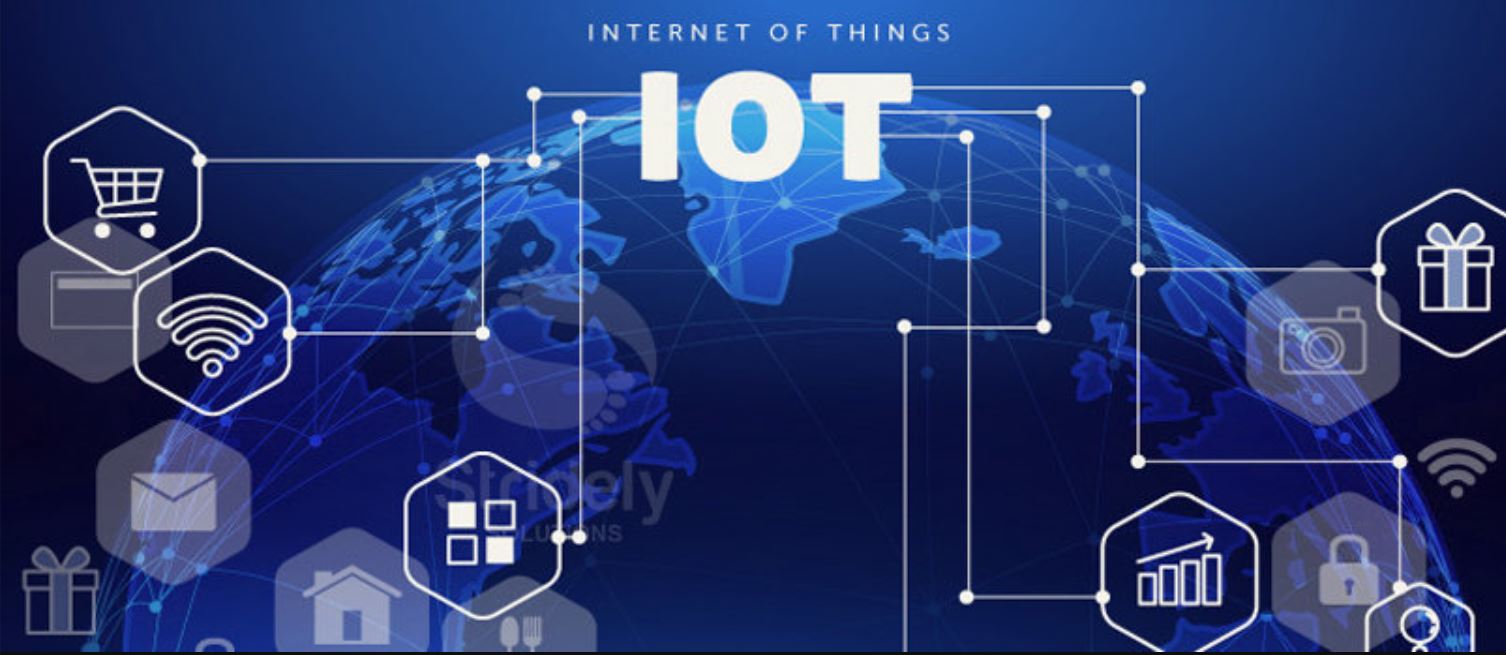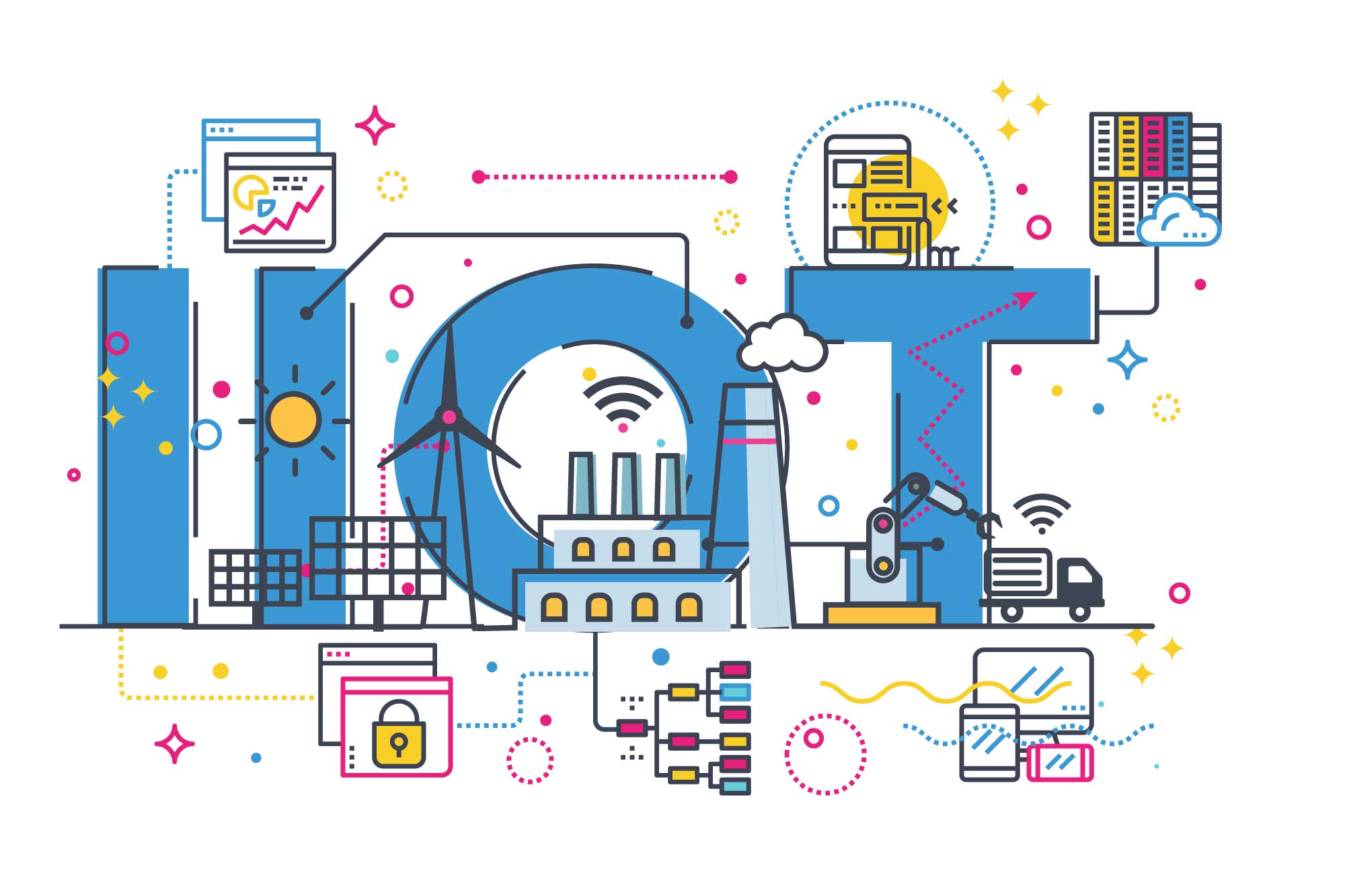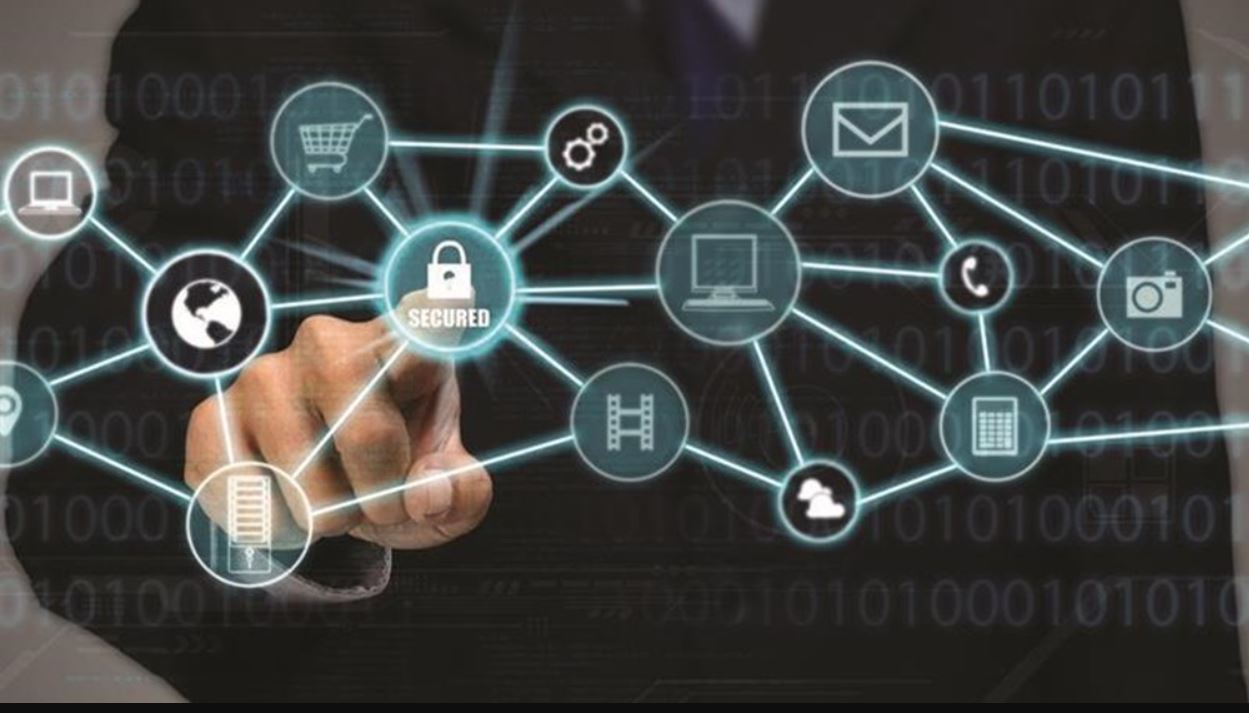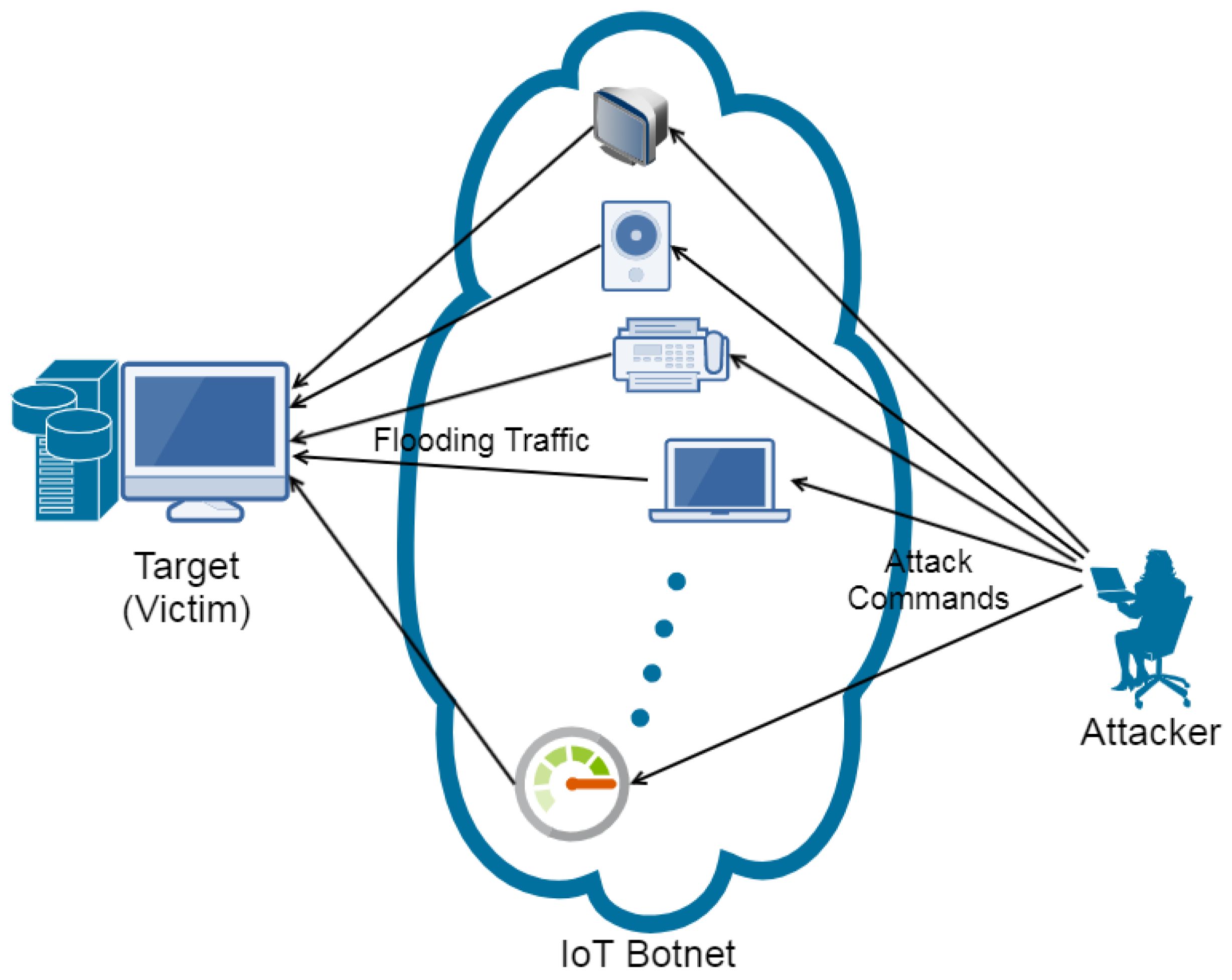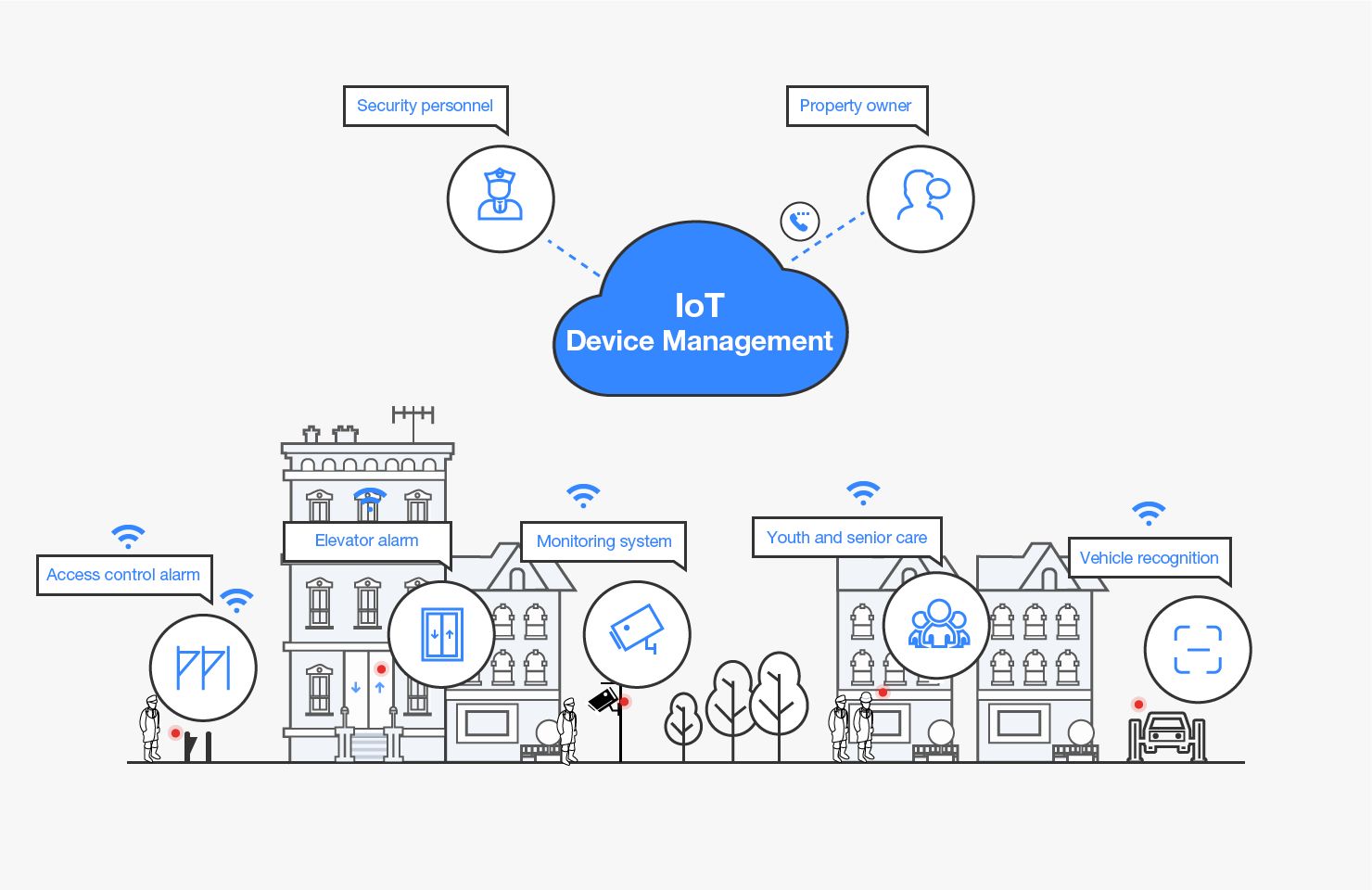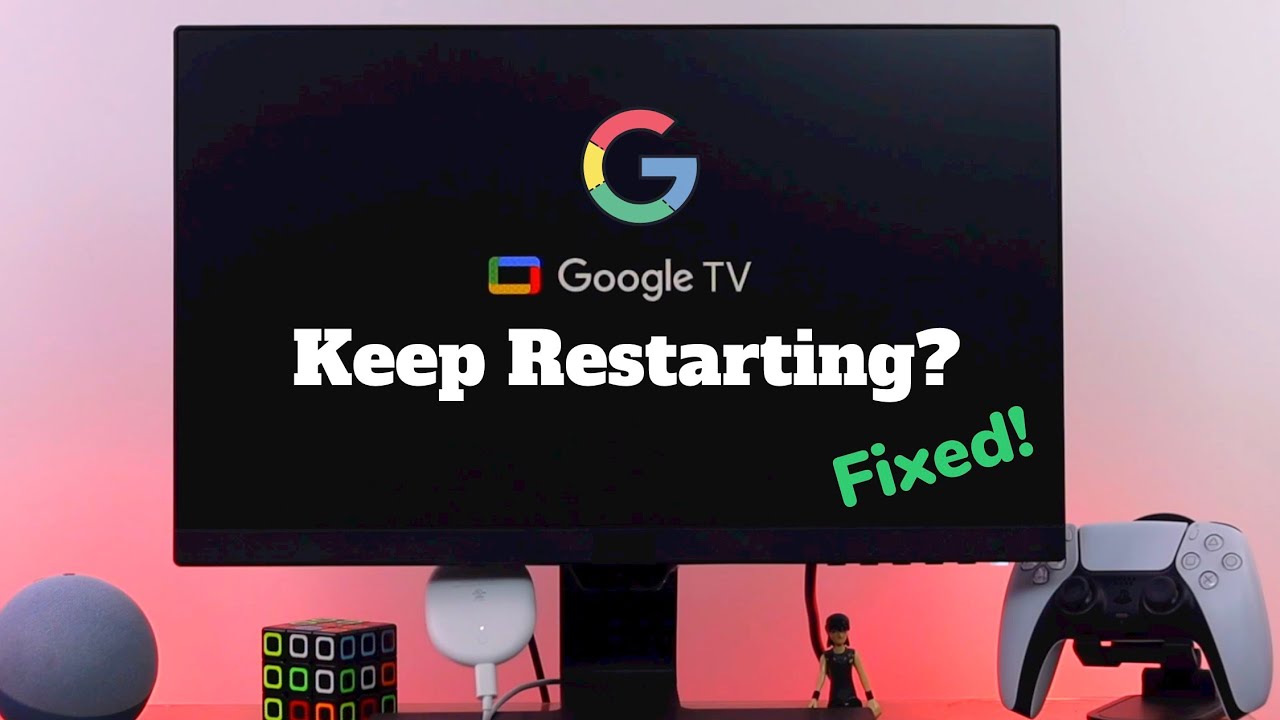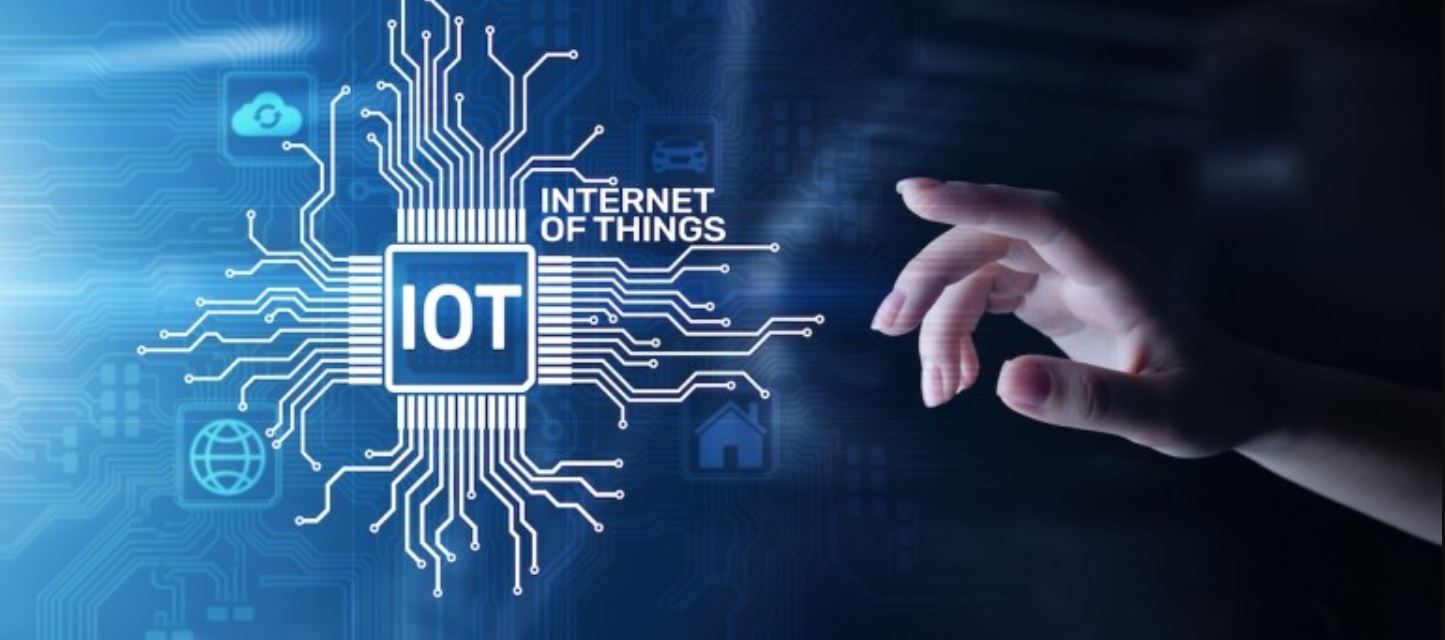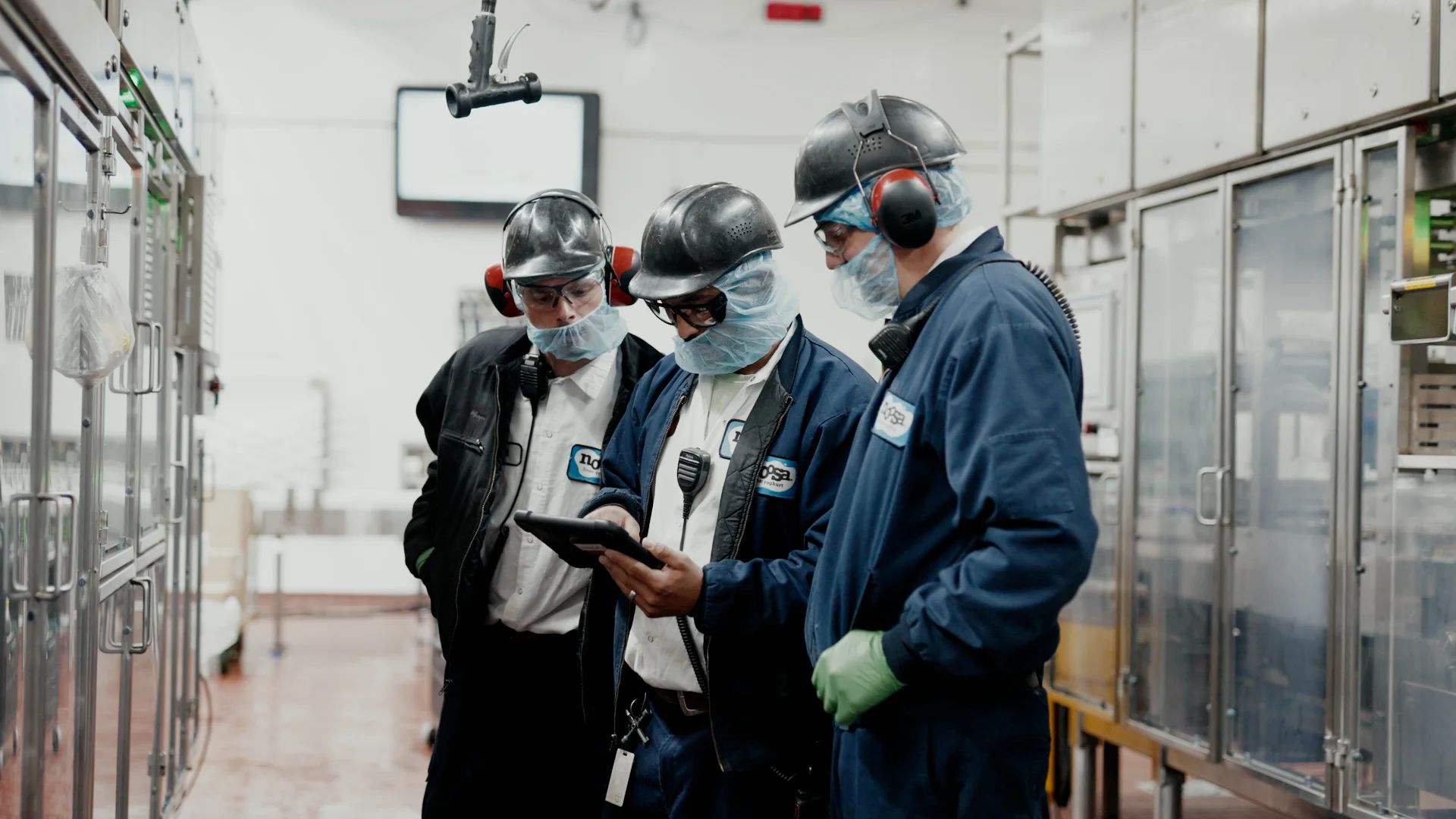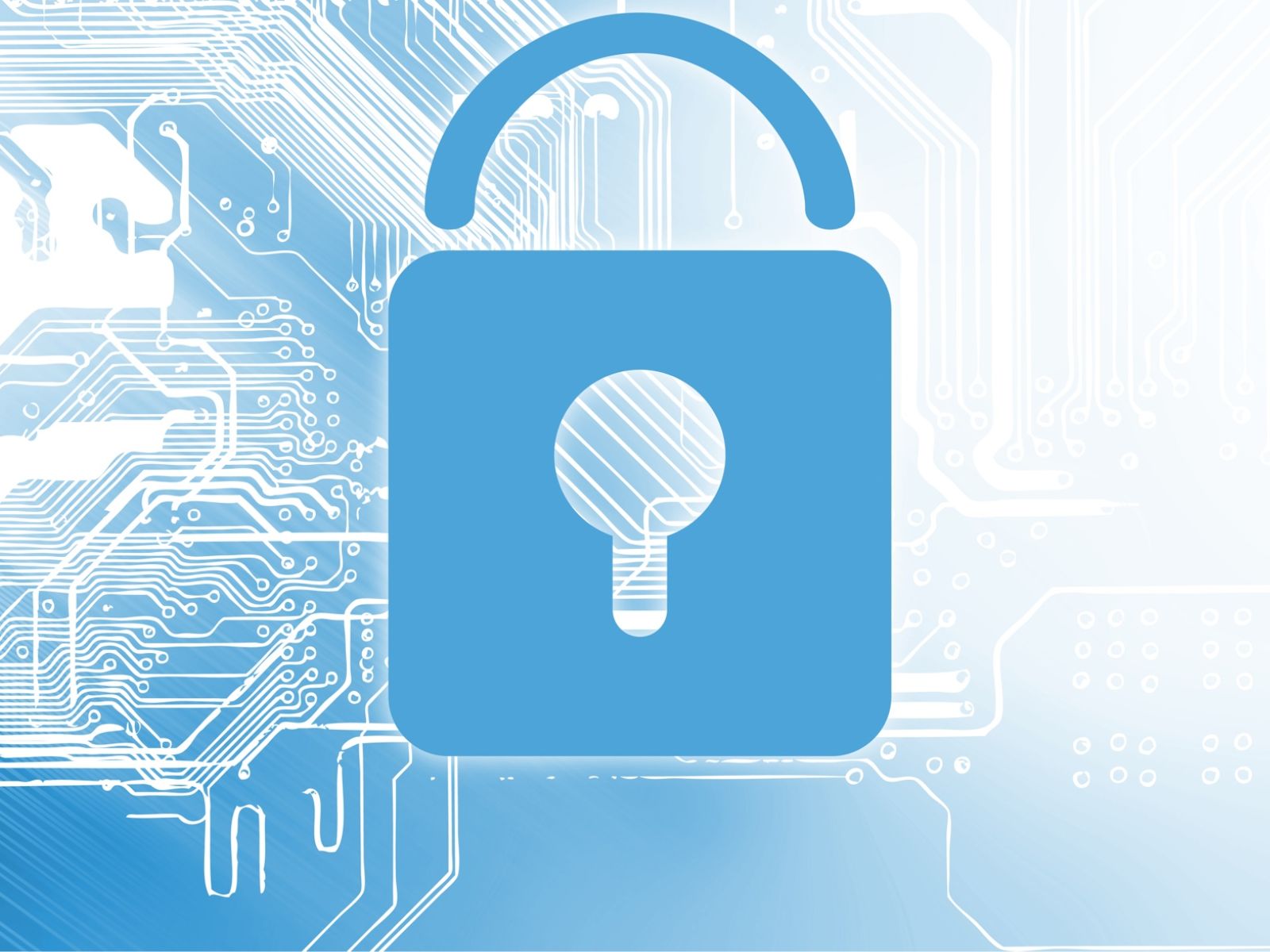Introduction
The Internet of Things (IoT) is revolutionizing the way we live, work, and interact with technology. It refers to the network of interconnected devices that have the ability to collect and exchange data over the internet without human intervention. This disruptive technology is transforming various industries and opening up new possibilities for innovation and efficiency.
The IoT encompasses a wide range of devices, including smart appliances, wearable technology, industrial machinery, and even vehicles. These devices are equipped with sensors, actuators, and software that enable them to collect and transmit data. This data is then analyzed and used to automate processes, optimize performance, and make informed decisions.
One of the key features of the IoT is its ability to create a seamless and interconnected ecosystem where devices can communicate and collaborate with each other. This allows for the automation of tasks, improved productivity, and enhanced convenience for users. For example, a smart home system can automatically adjust the temperature, turn on the lights, and lock the doors based on the occupants’ preferences and patterns.
The IoT has gained significant momentum in recent years, thanks to advancements in technology, such as wireless connectivity, cloud computing, and artificial intelligence. These developments have made it easier and more cost-effective to deploy IoT solutions on a large scale. As a result, we are seeing a rapid proliferation of connected devices in various sectors, including healthcare, manufacturing, transportation, and agriculture.
The potential benefits of the IoT are vast. By enabling devices to collect and share real-time data, organizations can gain valuable insights that can empower them to make data-driven decisions. For example, in healthcare, wearable devices can monitor patients’ vital signs and alert healthcare providers in case of any abnormalities, enabling timely intervention and personalized care. In agriculture, IoT sensors can measure moisture levels in the soil and automatically trigger irrigation systems, optimizing water usage and crop yields.
However, along with the numerous benefits, the IoT also presents several challenges. One of the primary concerns is data privacy and security. With the vast amount of data being generated and transmitted by IoT devices, ensuring the security and confidentiality of this data is crucial to prevent unauthorized access or misuse. Moreover, the sheer scale of the IoT infrastructure poses challenges in terms of managing and analyzing the massive amounts of data generated, often referred to as “big data.
Definition of IoT
The Internet of Things (IoT) is a concept that refers to the network of physical objects or “things” embedded with sensors, software, and connectivity, allowing them to collect and exchange data over the internet. These objects can be anything from everyday household items, such as refrigerators and thermostats, to industrial machinery and even vehicles. The key idea behind the IoT is to enable these objects to communicate with each other and with other devices or systems, creating a seamless and interconnected network.
At its core, the IoT is all about making objects smart and enabling them to gather data and perform tasks without human intervention. This is achieved through the integration of various technologies, including sensors to capture real-time data, actuators to control physical processes, and connectivity to enable communication and data exchange. The data collected by these devices can be analyzed and used to automate processes, optimize performance, and improve decision-making.
To comprehend the vastness of the IoT, it is essential to understand the three main components that constitute its foundation: the physical devices, the connectivity, and the data analytics. Firstly, the physical devices, also known as “smart” or “connected” devices, are the objects that are equipped with sensors, actuators, and software to collect and transmit data. These devices are designed to be able to interact with the internet and other devices on the network.
Secondly, connectivity plays a crucial role in the IoT. The devices need to be connected to each other and to the internet in order to share the data they collect and receive instructions. This can be achieved through various means, including Wi-Fi, Bluetooth, cellular networks, or even dedicated IoT networks. The choice of connectivity method depends on factors such as the range, power consumption, and bandwidth requirements of the application.
Lastly, data analytics is a crucial aspect of the IoT. The immense amount of data generated by the connected devices needs to be processed and analyzed to extract valuable insights. This involves employing advanced analytics techniques, such as machine learning and artificial intelligence, to identify patterns, make predictions, and enable proactive decision-making. The insights gained from data analytics can lead to improved efficiency, cost savings, and better customer experiences.
Overall, the IoT is a transformative technology that is reshaping industries and society as a whole. It has the potential to revolutionize how we interact with technology and how we live our lives. From smart homes and cities to connected cars and wearable devices, the IoT is driving innovation and creating new opportunities for businesses and individuals alike.
Examples of IoT Applications
The Internet of Things (IoT) has permeated various industries, enabling innovative applications and transforming the way we interact with technology. Here are some notable examples of how IoT is being applied in different sectors:
- Smart Home: IoT technology is revolutionizing the way we manage and control our homes. From smart thermostats that adjust the temperature based on occupancy and weather conditions, to voice-controlled assistants that automate tasks, such as turning on lights and locking doors, IoT devices in smart homes enhance convenience, save energy, and improve security.
- Industrial Automation: IoT is powering advancements in industrial automation, enabling smarter and more efficient manufacturing processes. IoT sensors embedded in machinery collect real-time data on performance, allowing for predictive maintenance, reduced downtime, and optimized production. Industrial IoT also facilitates remote monitoring and control, enabling businesses to streamline operations and boost productivity.
- Healthcare Monitoring: IoT devices play a critical role in remote patient monitoring and healthcare management. Wearable devices equipped with health sensors, such as heart rate monitors, glucose meters, and sleep trackers, collect vital health data that can be transmitted to healthcare professionals in real-time. This allows for proactive interventions, personalized treatments, and improved patient outcomes.
- Smart Agriculture: IoT is transforming agriculture by providing farmers with real-time insights into crop health, soil moisture levels, and weather conditions. IoT sensors placed in fields enable precision irrigation and fertilizer application, minimizing resource wastage and maximizing crop yields. Connected devices also enable automated monitoring and control of farm equipment, reducing labor and improving operational efficiency.
- Connected Cars: IoT technology is revolutionizing the automotive industry, with connected cars offering a host of advanced features and services. From real-time GPS navigation and traffic updates to remote diagnostics and vehicle-to-vehicle communication, IoT enables a safer, more efficient, and personalized driving experience. Additionally, connected cars can provide data on driver behavior and vehicle performance, allowing for personalized insurance premiums and predictive maintenance.
These are just a few examples of how IoT is being applied in various sectors. From smart cities and energy management to retail and supply chain optimization, the possibilities are vast. The ability to collect, analyze, and act upon real-time data is transforming industries, driving innovation, and creating new opportunities for businesses and individuals alike.
Benefits of IoT
The Internet of Things (IoT) offers numerous advantages that are revolutionizing industries and transforming the way we live and work. Here are some key benefits of implementing IoT solutions:
- Improved Efficiency: IoT enables the automation of tasks and processes, leading to increased efficiency and productivity. By collecting and analyzing real-time data, IoT devices can optimize operations, reduce downtime, and minimize wastage of resources. For example, in manufacturing, IoT sensors in production lines can monitor equipment performance, detect anomalies, and trigger preventive maintenance, thereby improving overall efficiency.
- Enhanced Customer Experience: IoT allows for personalized and seamless experiences for customers. From smart homes that adjust settings as per occupants’ preferences to personalized recommendations based on individual preferences, IoT devices leverage data to create tailored experiences. For instance, retail stores can use IoT-enabled beacons to send targeted offers and promotions to customers’ smartphones when they are in close proximity to a particular product.
- Cost Savings: IoT can lead to significant cost savings for businesses. By optimizing resource utilization and improving operational efficiency, IoT solutions help reduce expenses associated with maintenance, energy consumption, and waste. For instance, smart energy grids leverage IoT devices to monitor and manage energy usage, leading to optimized consumption and lower costs.
- Increased Safety and Security: IoT devices contribute to enhanced safety and security across various domains. For example, in the healthcare sector, IoT-enabled wearables and monitoring devices can detect emergencies, track vitals, and alert medical professionals in real-time. IoT-enabled surveillance systems can also help in monitoring public spaces and ensuring public safety.
- Data-Driven Decision Making: IoT generates a vast amount of data that can be analyzed to derive actionable insights. By leveraging advanced analytics techniques, such as machine learning and artificial intelligence, businesses can make data-driven decisions. For instance, in agriculture, IoT sensors can analyze soil conditions and crop health to optimize irrigation and fertilizer usage, leading to improved yields.
These benefits highlight the transformative potential of IoT in various industries. However, it is important to address challenges related to data security and privacy to fully harness the potential of this technology. With proper implementation and management, IoT can revolutionize businesses, improve quality of life, and drive innovation in the digital age.
Challenges of IoT
While the Internet of Things (IoT) offers significant advantages, there are several challenges that need to be addressed for its widespread adoption. These challenges encompass technological, security, and ethical considerations. Here are some key challenges associated with the IoT:
- Data Privacy and Security: One of the major concerns with IoT is the security and privacy of the vast amount of data being collected and transmitted. The interconnected nature of IoT devices increases the risk of unauthorized access and data breaches. It is essential to implement robust security measures, such as encryption and authentication protocols, to safeguard sensitive information.
- Interoperability and Standards: The diverse ecosystem of IoT devices makes interoperability and standardization challenging. Different manufacturers use different protocols and technologies, making it difficult for devices to communicate and work together seamlessly. The development of common standards and protocols is crucial to ensure interoperability and enhance the scalability of IoT solutions.
- Scalability and Data Management: The proliferation of connected devices results in the generation of massive amounts of data. Managing and analyzing this data in a timely and efficient manner is a significant challenge. Organizations need to invest in robust data management systems and adopt scalable architectures to handle the ever-increasing volumes of IoT data.
- Power Constraints and Energy Efficiency: Many IoT devices operate on battery power, which poses challenges in terms of power consumption and longevity. Energy-efficient designs and optimizations are essential to prolong the battery life of IoT devices and reduce their environmental impact. Additionally, the efficient use of energy resources in IoT infrastructure, such as smart grids, is crucial to minimize energy wastage.
- Ethical Considerations: The collection and utilization of personal data by IoT devices raise ethical concerns. It is essential to establish clear guidelines and regulations to ensure transparent data practices and protect individuals’ privacy. Additionally, ethical considerations should also address issues related to algorithmic bias and the responsible use of AI in decision-making processes.
Addressing these challenges requires collaborative efforts from various stakeholders, including policymakers, manufacturers, and consumers. By prioritizing data security, promoting interoperability, investing in infrastructure, and establishing ethical frameworks, the full potential of IoT can be harnessed while minimizing risks and ensuring a sustainable and responsible implementation.
IoT as a Disruptive Technology
The Internet of Things (IoT) is widely recognized as a disruptive technology that is reshaping industries and challenging traditional business models. It offers organizations new opportunities for innovation, efficiency, and growth. Here’s why IoT is considered a disruptive force:
Connectivity and Automation: IoT enables unprecedented connectivity and automation in various domains. By connecting devices, sensors, and systems, organizations can gather real-time data, automate processes, and streamline operations. This connectivity allows for the efficient exchange of information and the integration of disparate systems, eliminating silos and enabling new capabilities.
Data-Driven Insights: IoT generates massive amounts of data, providing organizations with valuable insights that were previously inaccessible. With advanced analytics and machine learning, organizations can uncover patterns, trends, and correlations within this data. This empowers businesses to make data-driven decisions, optimize performance, and unlock new revenue streams.
Transformation of Industries: IoT is transforming industries by enabling the creation of new products, services, and business models. In healthcare, for example, IoT is revolutionizing patient monitoring, telemedicine, and personalized healthcare. In logistics and supply chain, IoT enables real-time tracking, inventory optimization, and predictive maintenance. The possibilities are endless, with IoT disrupting sectors such as manufacturing, agriculture, energy, transportation, and more.
Enhanced Customer Experience: IoT allows organizations to provide personalized, context-aware experiences for customers. By understanding customer preferences and behavior through IoT data, businesses can tailor products, services, and marketing efforts. This creates a more engaging, convenient, and customer-centric experience, fostering loyalty and increasing customer satisfaction.
Disruption of Business Models: IoT disrupts traditional business models by enabling new revenue streams and value propositions. For example, instead of selling a product outright, organizations can provide it as a service. This shift from a product-centered approach to a service-oriented model provides ongoing value for customers and opens up new revenue opportunities for businesses.
Collaboration and Partnerships: IoT promotes collaboration and partnerships between organizations across industries. By sharing data and resources, businesses can create innovative solutions and drive collective growth. Collaborative IoT platforms and ecosystems facilitate seamless integration and interoperability, fostering innovation and agility.
In summary, IoT is a disruptive technology that is reshaping industries, transforming business models, and revolutionizing the way we interact with technology. Its ability to connect devices, gather and analyze real-time data, and drive insights is unlocking new opportunities for innovation, efficiency, and customer-centric experiences. Organizations that embrace IoT and leverage its potential are poised to gain a competitive advantage in a rapidly changing digital landscape.
How IoT is Disrupting Industries
The Internet of Things (IoT) is causing significant disruptions across various industries, transforming traditional business models and creating new opportunities for innovation and growth. Here’s how IoT is disrupting key sectors:
1. Healthcare: IoT is revolutionizing healthcare by enabling remote patient monitoring, personalized treatments, and proactive interventions. Connected wearables and medical devices can collect real-time data on vital signs, allowing healthcare professionals to monitor patients remotely and detect potential health issues early on. IoT-enabled healthcare systems improve patient outcomes, reduce hospitalizations, and lower healthcare costs.
2. Manufacturing: IoT is optimizing manufacturing processes through increased automation, data-driven decision-making, and predictive maintenance. Connected sensors embedded in machinery collect data on performance, allowing for real-time monitoring and proactive maintenance. IoT-enabled manufacturing enables efficient resource allocation, just-in-time production, and improved quality control, resulting in cost savings and increased productivity.
3. Transportation and Logistics: IoT is optimizing transportation and logistics operations by enabling real-time tracking, route optimization, and predictive maintenance. Connected vehicles and smart logistics systems provide real-time data on location, fuel consumption, and vehicle health. This enables businesses to streamline operations, reduce costs, and enhance customer satisfaction through improved delivery times and supply chain visibility.
4. Agriculture: IoT is revolutionizing agriculture by enabling precision farming and resource optimization. Sensors embedded in the soil can monitor moisture levels, temperature, and nutrient content, allowing for precise irrigation and fertilizer application. IoT-enabled farm equipment provides data on crop health and productivity, enabling farmers to make informed decisions and optimize yields. This results in improved resource efficiency and sustainable agricultural practices.
5. Energy and Utilities: IoT is transforming the energy sector by enabling smart grids, energy management systems, and real-time monitoring of energy consumption. Connected devices and sensors allow for proactive energy management, load balancing, and demand response. IoT-enabled energy systems reduce wastage, enable renewable energy integration, and empower consumers to track and optimize their energy usage.
6. Retail: IoT is reshaping the retail industry through smart shelves, beacons, and personalized marketing. Connected sensors in stores track inventory levels, enabling automatic reordering and reducing stockouts. Beacons in retail stores provide tailored promotions and personalized recommendations to customers based on their preferences and location. IoT-enabled retail enhances the customer experience, improves operational efficiency, and drives sales.
These examples illustrate the transformative power of IoT across various industries. By harnessing the capabilities of IoT, organizations can optimize processes, create new business models, and deliver enhanced customer experiences. Embracing IoT is crucial in staying competitive in the digital age and unlocking the full potential of disruptive innovation.
Impact of IoT on Business Models
The Internet of Things (IoT) is reshaping traditional business models, offering new revenue opportunities, and transforming the way organizations operate. Here are some key impacts of IoT on business models:
1. Product-as-a-Service: IoT enables a shift from product-centered business models to service-oriented models. Instead of selling products, organizations can offer them as a service, bundled with ongoing maintenance, updates, and customer support. For example, manufacturers of industrial machinery can provide equipment on a subscription basis, ensuring optimal performance and minimizing downtime for customers.
2. Data Monetization: IoT generates massive amounts of data that can be analyzed to derive valuable insights. Organizations can leverage this data to create new revenue streams by offering data-driven services and analytics. For instance, a smart city can utilize data collected from IoT sensors to provide urban planners, businesses, and citizens with valuable information, such as traffic patterns, energy consumption, and waste management, allowing for more informed decision-making.
3. Enhanced Customer Experience: IoT enables businesses to provide personalized and seamless experiences for customers. By leveraging data collected from connected devices, organizations can gain insights into customer preferences and behavior. This information can be used to deliver targeted recommendations, tailored promotions, and customized services, enhancing customer satisfaction and fostering loyalty.
4. Operational Efficiency and Cost Savings: IoT allows organizations to optimize operations, reduce costs, and improve their bottom line. Connected sensors and devices enable real-time monitoring and remote management, reducing the need for manual intervention and minimizing downtime. Predictive maintenance based on IoT data can help prevent equipment failures and optimize maintenance schedules, resulting in cost savings and improved operational efficiency.
5. Collaboration and Value Chain Integration: IoT facilitates collaboration and integration across the value chain. Organizations can share data with partners, suppliers, and customers, enabling seamless coordination, supply chain visibility, and efficient resource allocation. IoT platforms and ecosystems create opportunities for partnerships and collaborations, fostering innovation and driving collective growth.
6. Business Model Innovation: The rapid advancements in IoT technology inspire organizations to develop innovative business models. For example, companies may combine physical products with digital services, creating new value propositions and revenue streams. The IoT enables organizations to rethink their value proposition, identify new markets, and explore alternative business models that align with the changing needs of customers and the market.
In summary, IoT is disrupting traditional business models by offering new opportunities for service-oriented approaches, data monetization, and enhanced customer experiences. Organizations that embrace IoT and adapt their business models accordingly can gain a competitive advantage, drive innovation, and capitalize on the transformative potential of this technology.
Conclusion
The Internet of Things (IoT) is a disruptive force that is transforming industries, reshaping business models, and revolutionizing the way we live and work. IoT enables the connectivity of devices, the collection of real-time data, and the automation of processes, offering numerous benefits and opportunities for innovation. From smart homes and cities to connected cars and healthcare, IoT applications are reshaping various sectors and creating new possibilities.
The benefits of IoT are immense. It improves efficiency, enhances the customer experience, reduces costs, and enables data-driven decision-making. IoT-driven insights empower organizations to optimize operations, deliver personalized services, and uncover new revenue streams. However, with these benefits come challenges that need to be addressed, such as data security, interoperability, scalability, and ethical considerations.
IoT disrupts traditional business models by enabling product-as-a-service models, data monetization, and enhanced value chain integration. Organizations can leverage IoT to deliver new services, transform their value propositions, and collaborate with partners to drive innovation. IoT also opens up opportunities for business model innovation as companies explore novel ways to deliver value and meet customer needs.
To fully harness the potential of IoT, collaboration and cooperation among various stakeholders are essential. Policymakers, manufacturers, and consumers need to work together to overcome challenges, develop industry standards, and establish ethical frameworks. From the design and implementation of secure IoT systems to the responsible use of data, all players have a role to play in ensuring the success and sustainability of the IoT ecosystem.
In conclusion, IoT is a transformative technology that is reshaping industries, driving innovation, and improving the quality of life. It is not just a trend but a powerful force that will continue to shape our future. Organizations that embrace IoT and adapt their strategies can unlock new opportunities, gain a competitive edge, and thrive in the digital age.







